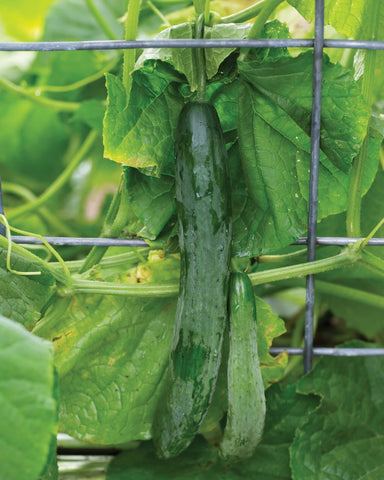In a world that's constantly seeking natural and holistic approaches to health and well-being, medicinal gardens have gained popularity as a source of healing, nourishment, and connection with nature. These gardens, often featuring an array of medicinal herbs and plants, offer not only a lush and tranquil space but also a bounty of remedies for various ailments. In this comprehensive guide, we'll delve into the world of medicinal gardens, exploring the benefits of growing herbs for health and wellness, the must-have medicinal plants, and tips for creating your own healing haven.The following content also has some reference value for raised garden beds.
Understanding Medicinal Gardens

A medicinal garden is a carefully curated space where plants with healing properties are cultivated for various purposes, such as:
Health and Healing
- Medicinal plants in these gardens are used to create natural remedies for common ailments, from colds and headaches to stress and sleeplessness.
Culinary Delights
- Many medicinal herbs also find their way into the kitchen, enhancing the flavor and nutritional value of dishes.
Aesthetic Beauty
- Beyond their practical uses, medicinal gardens often feature visually appealing plants, adding aesthetic charm to outdoor spaces.
The Benefits of Medicinal Gardens

Holistic Healing
- Medicinal gardens promote holistic well-being by providing natural remedies that address physical, mental, and emotional health.
Sustainability
- Cultivating your medicinal plants reduces reliance on store-bought pharmaceuticals and encourages sustainable, eco-friendly practices.
Connection with Nature
- Spending time in a medicinal garden fosters a deep connection with nature, reducing stress and promoting mindfulness.
Must-Have Medicinal Plants

To get you started on your journey to creating a medicinal garden, here's a list of must-have medicinal plants:
1. Lavender
- Known for its calming properties, lavender is excellent for reducing stress and promoting relaxation.
2. Echinacea
- Echinacea is celebrated for its immune-boosting properties, helping fend off colds and flu.
3. Peppermint
- Peppermint aids digestion, alleviates headaches, and soothes muscle pain.
4. Aloe Vera
- Aloe vera is a go-to for skin ailments, including burns, cuts, and dry skin.
5. Chamomile
- Chamomile is known for its calming effects and is often used to alleviate anxiety and insomnia.
6. Rosemary
- Rosemary supports memory and cognitive function while adding flavor to dishes.
7. Calendula
- Calendula possesses anti-inflammatory properties and is used to treat skin conditions.
8. Turmeric
- Turmeric is a powerful anti-inflammatory herb with a wide range of health benefits.
9. Ginseng
- Ginseng is renowned for boosting energy, reducing stress, and enhancing cognitive function.
10. Lemon Balm
- Lemon balm has a calming effect, making it effective in managing anxiety and promoting sleep.
Creating Your Medicinal Garden

Now that you're acquainted with the concept of medicinal gardens and some essential plants to include, let's explore the steps to create your own healing haven:
Location, Location, Location
- Choose a sunny spot in your garden where medicinal herbs can thrive. Most herbs prefer well-drained soil and adequate sunlight.
Garden Design
- Plan your garden layout, considering the growth habits and spacing requirements of each herb. Raised beds or container gardens are excellent options.
Soil Preparation
- Ensure your soil is well-prepared with proper nutrients and pH levels to support healthy herb growth.
Herb Selection
- Choose herbs based on your needs and climate. Research each herb's care requirements, as they may vary.
Companion Planting
- Practice companion planting to deter pests and enhance growth. For example, marigolds can deter aphids, while basil complements tomatoes.
Maintenance
- Regularly water, prune, and fertilize your medicinal garden to ensure thriving plants.
Harvesting
- Learn the appropriate time and method for harvesting each herb to maximize its potency and flavor.
Creating Remedies from Your Medicinal Garden
One of the most rewarding aspects of a medicinal garden is the ability to create your own natural remedies. Here are a few easy instructions to get you started:
Lavender Sleep Sachets
- Fill small cloth sachets with dried lavender flowers and place them under your pillow for a restful night's sleep.
Echinacea Tincture
- Create a tincture from echinacea roots to strengthen your immunity throughout the cold and flu season.
Peppermint Tea
- Harvest peppermint leaves to make a soothing tea that aids digestion and relieves headaches.
Aloe Vera Gel
- Harvest aloe vera leaves to extract the gel, which can be applied topically to soothe burns and skin irritations.
Calendula Salve
- Create a healing salve using calendula flowers infused in olive oil to treat minor cuts, scrapes, and dry skin.
Conclusion

A medicinal garden is not only a source of natural remedies but also a place of beauty, serenity, and connection with the natural world. By growing medicinal herbs and plants in your garden, you can take a proactive approach to your health and wellness while fostering a deeper appreciation for the healing power of nature. Whether you're an experienced gardener or just starting, the journey of creating a medicinal garden is both fulfilling and enriching. So, roll up your sleeves, dig in the dirt, and let your medicinal garden be your path to a healthier, more harmonious life.









